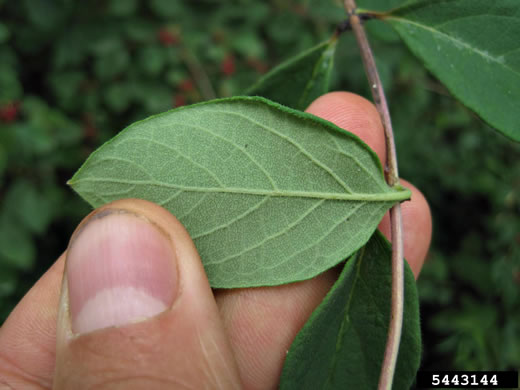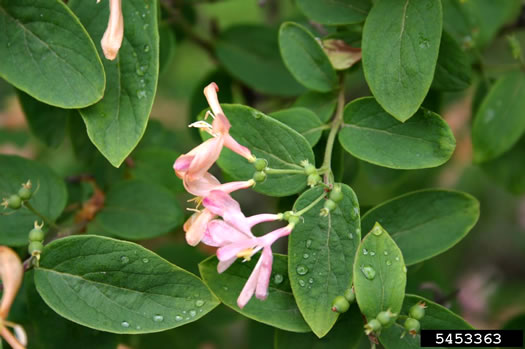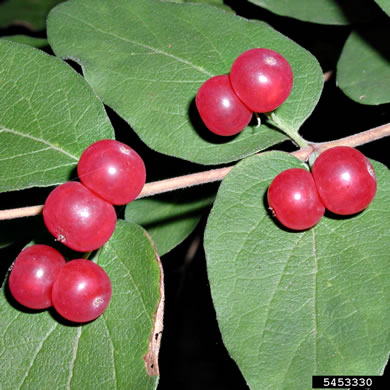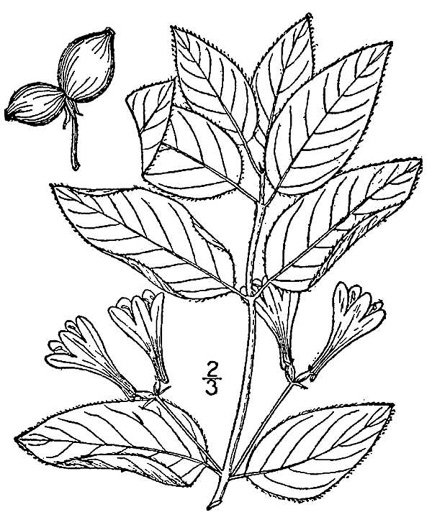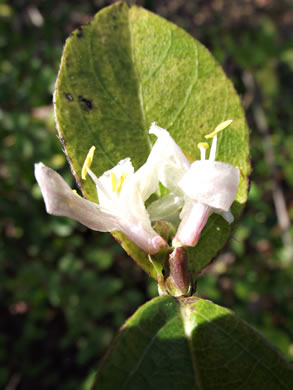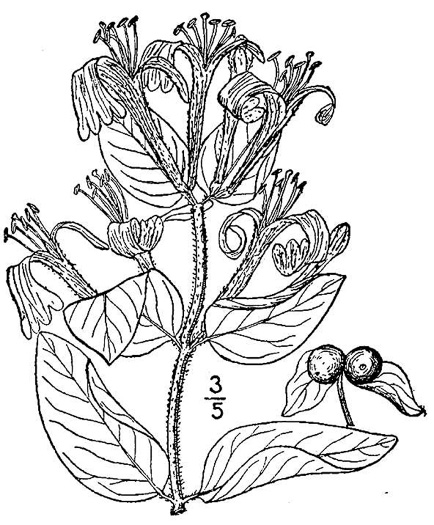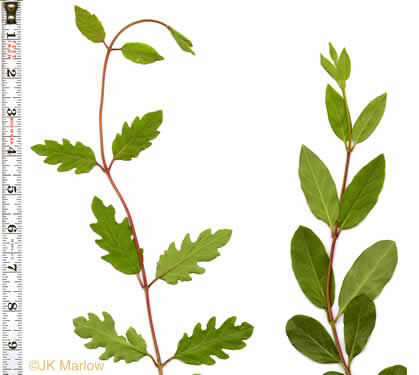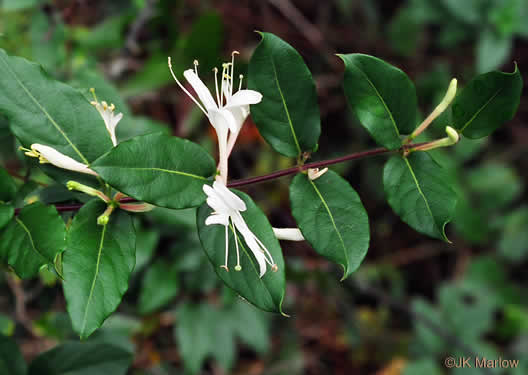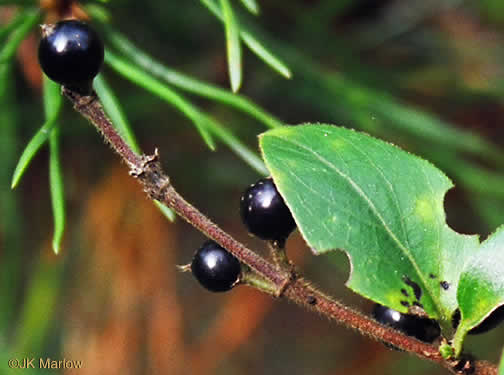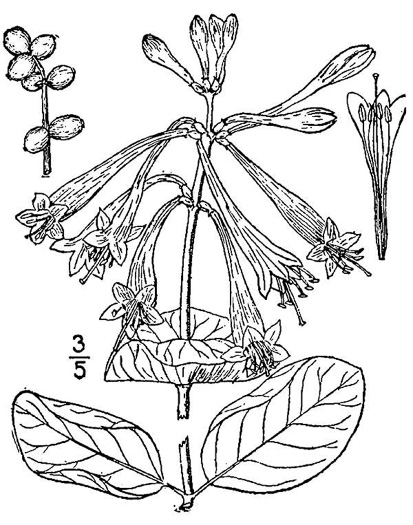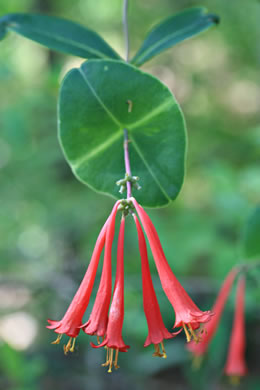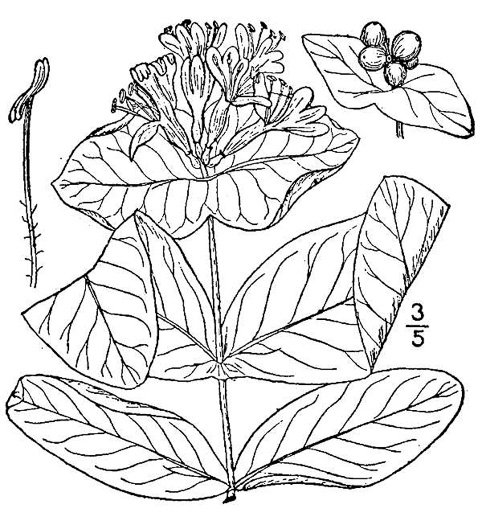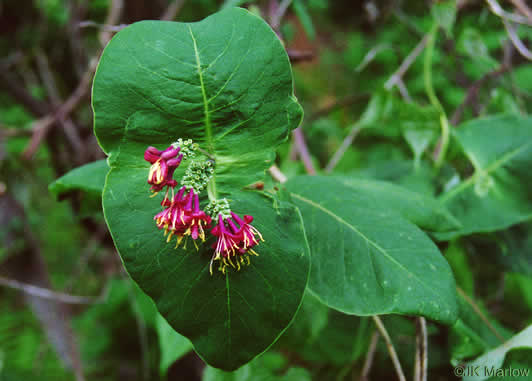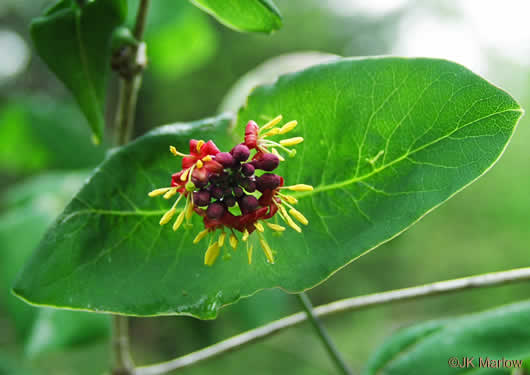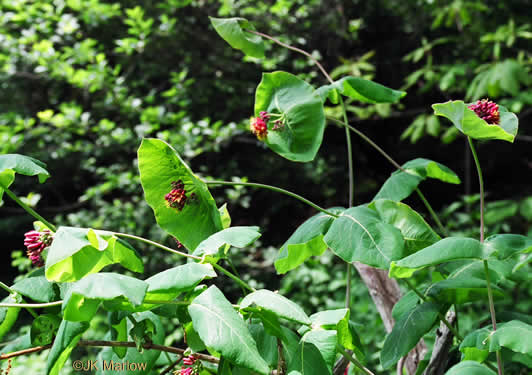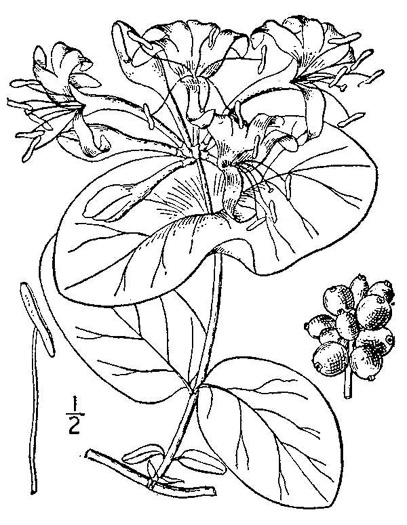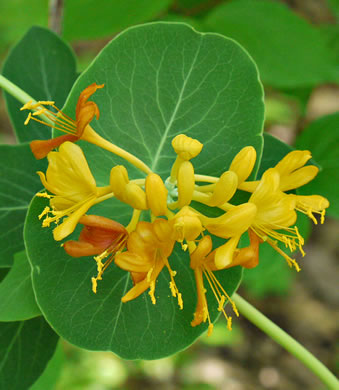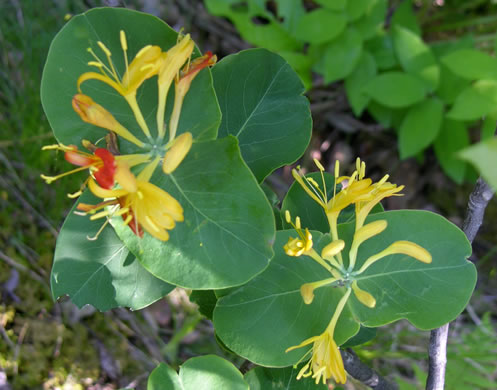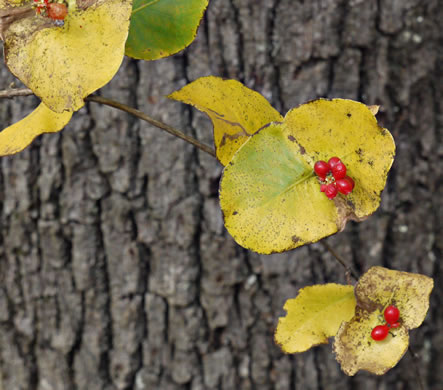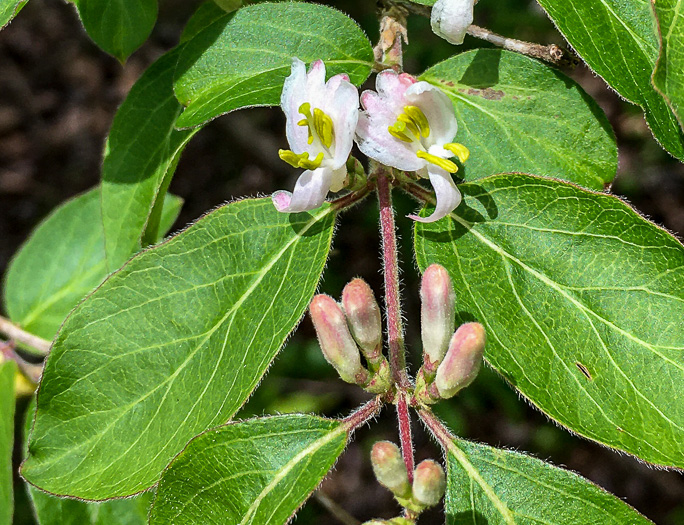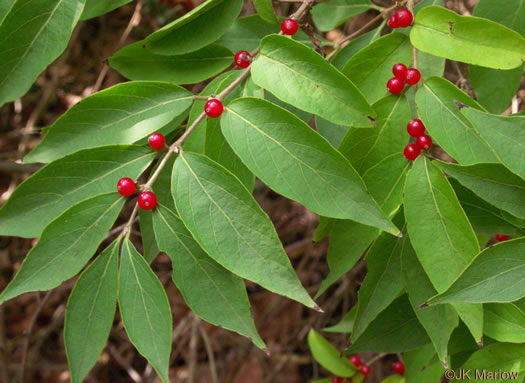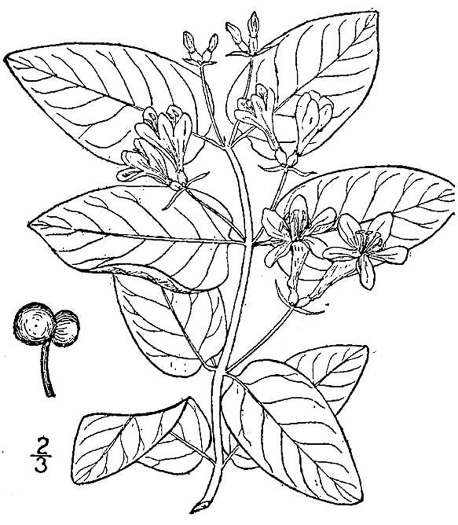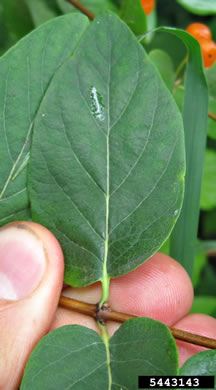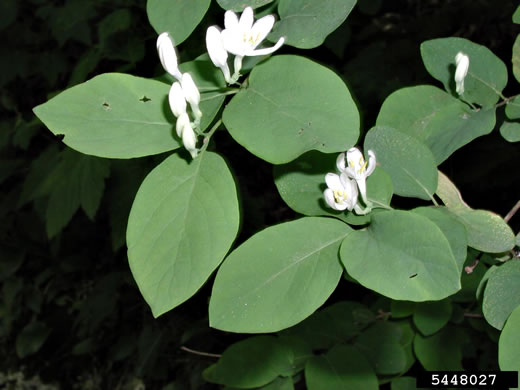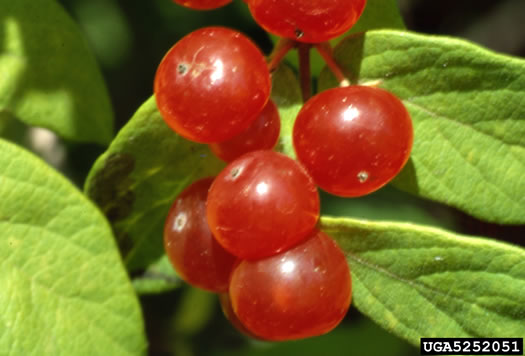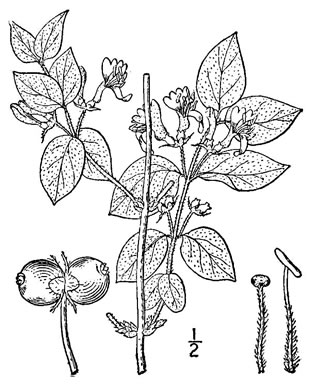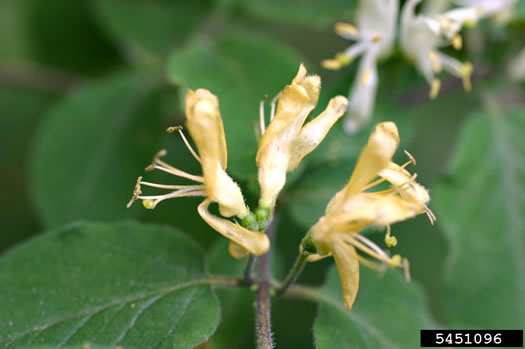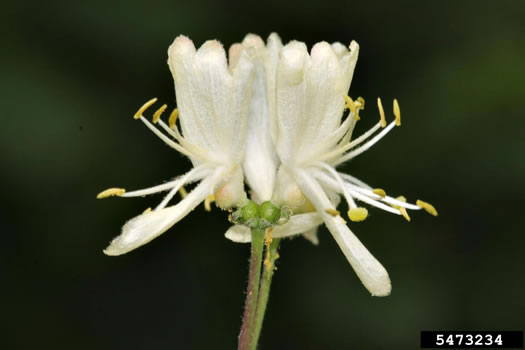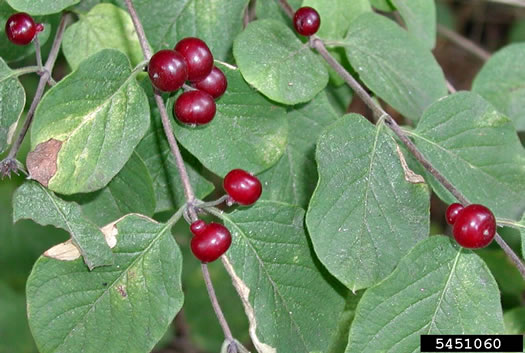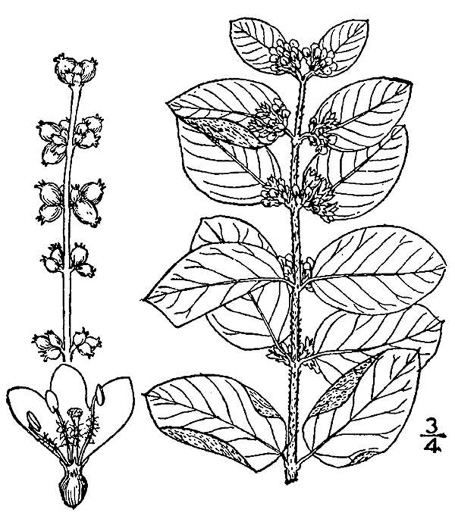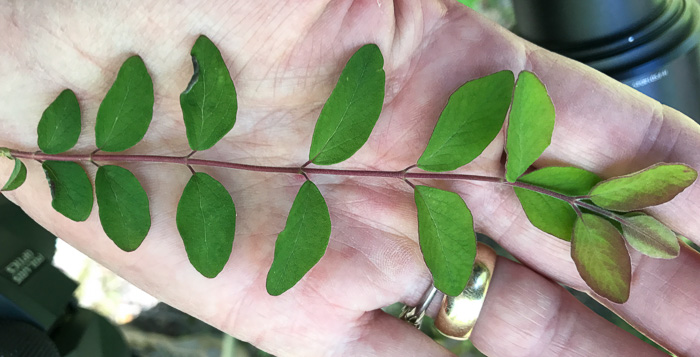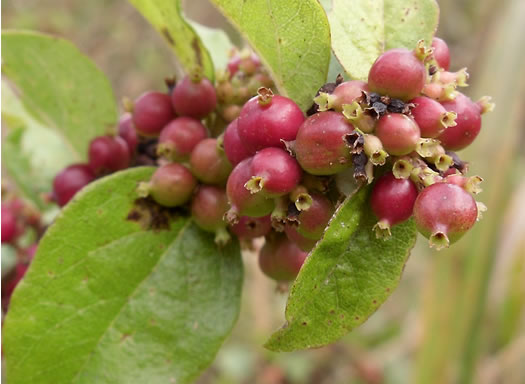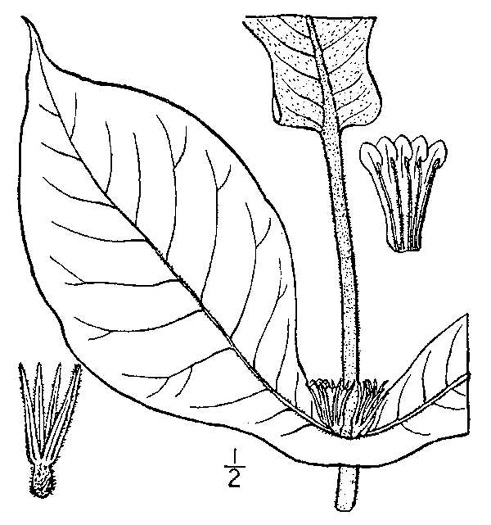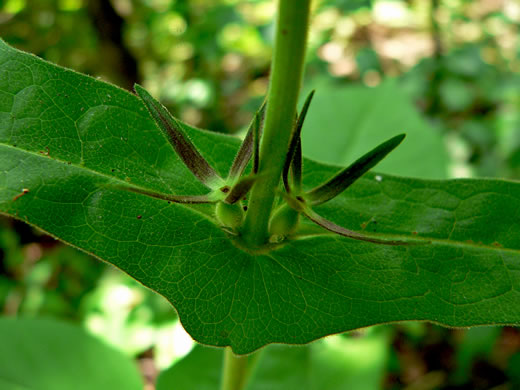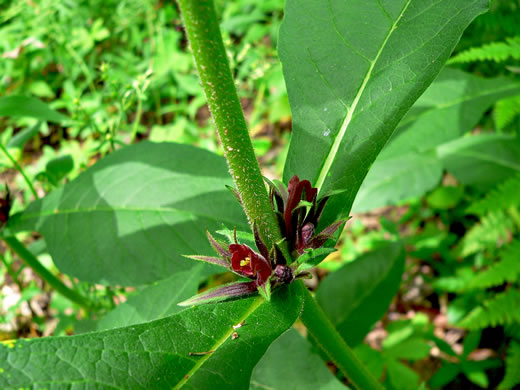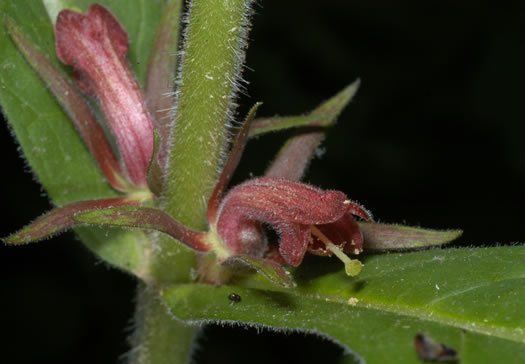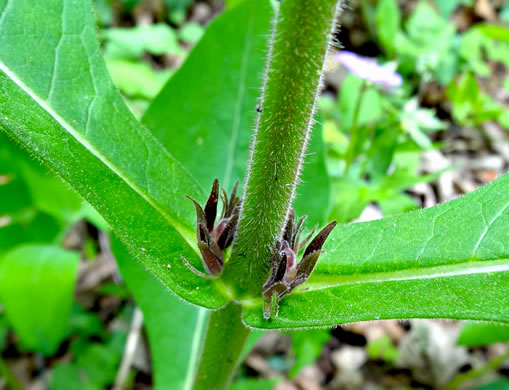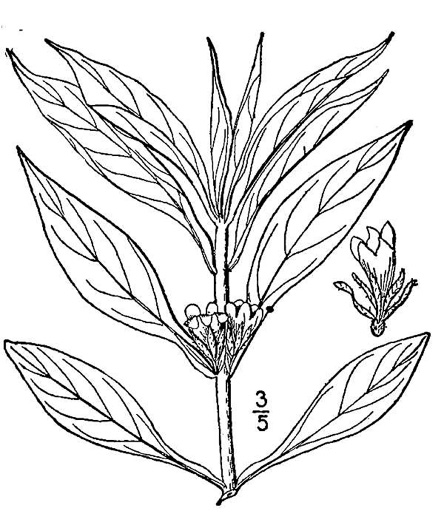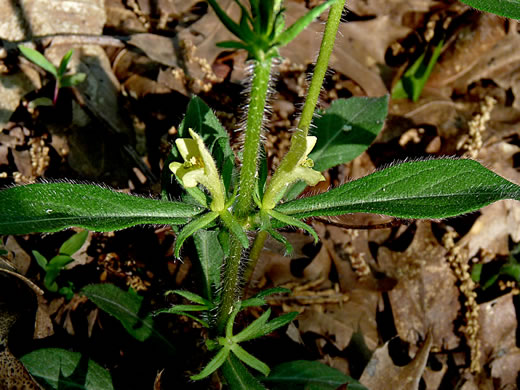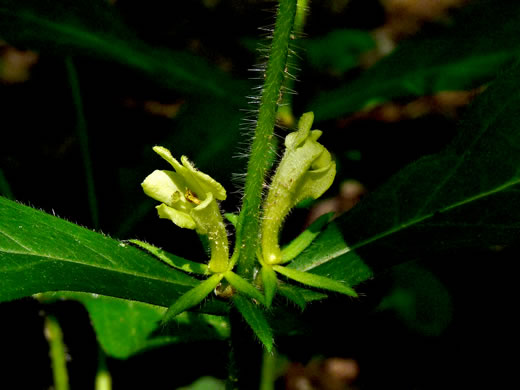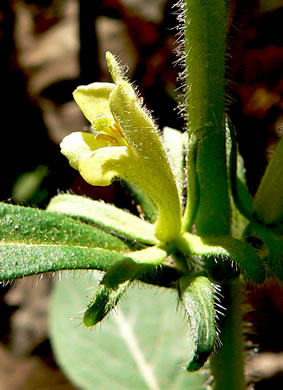Hovering over an image will enlarge it and point out features (works better on desktop than on mobile).
![]() A camera indicates there are pictures.
A camera indicates there are pictures.
![]() A speaker indicates that a botanical name is pronounced.
A speaker indicates that a botanical name is pronounced.
![]() A plus sign after a Latin name indicates that the species is further divided into varieties or subspecies.
A plus sign after a Latin name indicates that the species is further divided into varieties or subspecies.
Most habitat and range descriptions were obtained from Weakley's Flora.
Your search found 18 taxa in the family Caprifoliaceae, Honeysuckle family, as understood by Weakley's Flora.

![]()
![]() Common Name:
Bell's Honeysuckle, Pretty Honeysuckle, Showy Honeysuckle
Common Name:
Bell's Honeysuckle, Pretty Honeysuckle, Showy Honeysuckle
Weakley's Flora: (4/24/22) Lonicera ×bella FAMILY: Caprifoliaceae
SYNONYMOUS WITH PLANTS National Database: Lonicera ×bella [morrowii × tatarica] FAMILY: Caprifoliaceae
SYNONYMOUS WITH Vascular Flora of the Carolinas (Radford, Ahles, & Bell, 1968): Lonicera ×bella 174-02-001 FAMILY: Caprifoliaceae
Habitat: Forests, woodlands, fencerows, suburban woodlands
Rare
Non-native: Eurasia

![]() Common Name:
American Fly-honeysuckle
Common Name:
American Fly-honeysuckle
Weakley's Flora: (4/24/22) Lonicera canadensis FAMILY: Caprifoliaceae
SYNONYMOUS WITH PLANTS National Database: Lonicera canadensis FAMILY: Caprifoliaceae
SYNONYMOUS WITH Vascular Flora of the Carolinas (Radford, Ahles, & Bell, 1968): Lonicera canadensis 174-02-002 FAMILY: Caprifoliaceae
Habitat: Shrubby mountain bogs at high elevations, bouldery northern hardwood forests, hemlock and spruce swamps. Primiarily in the mountains in our flora region (south of PA, where more widespread)
Rare
Native to North Carolina & Georgia

![]()
![]() Common Name:
Sweet-breath-of-spring, Winter Honeysuckle
Common Name:
Sweet-breath-of-spring, Winter Honeysuckle
Weakley's Flora: (4/24/22) Lonicera fragrantissima FAMILY: Caprifoliaceae
SYNONYMOUS WITH PLANTS National Database: Lonicera fragrantissima FAMILY: Caprifoliaceae
SYNONYMOUS WITH Vascular Flora of the Carolinas (Radford, Ahles, & Bell, 1968): Lonicera fragrantissima 174-02-003 FAMILY: Caprifoliaceae
Habitat: Forests, woodlands, roadbanks, old house sites, spreading (sometimes aggressively) from horticultural use
Uncommon in Piedmont & Carolina Mountains (rare elsewhere in GA-NC-SC)
Non-native: China

![]()
![]() Common Name:
Japanese Honeysuckle
Common Name:
Japanese Honeysuckle
Weakley's Flora: (4/24/22) Lonicera japonica FAMILY: Caprifoliaceae
SYNONYMOUS WITH PLANTS National Database: Lonicera japonica FAMILY: Caprifoliaceae
SYNONYMOUS WITH Vascular Flora of the Carolinas (Radford, Ahles, & Bell, 1968): Lonicera japonica 174-02-004 FAMILY: Caprifoliaceae
Habitat: Nearly ubiquitous, especially common in the Piedmont and Coastal Plain and in mesic habitats
Common
Non-native: east Asia

![]()
![]() Common Name:
Coral Honeysuckle, Trumpet Honeysuckle, Scarlet Honeysuckle, Woodbine
Common Name:
Coral Honeysuckle, Trumpet Honeysuckle, Scarlet Honeysuckle, Woodbine
Weakley's Flora: (4/24/22) Lonicera sempervirens FAMILY: Caprifoliaceae
SYNONYMOUS WITH PLANTS National Database: Lonicera sempervirens FAMILY: Caprifoliaceae
SYNONYMOUS WITH Vascular Flora of the Carolinas (Radford, Ahles, & Bell, 1968): Lonicera sempervirens 174-02-005 FAMILY: Caprifoliaceae
Habitat: Dry forests and woodlands, maritime forests
Common
Native to the Carolinas & Georgia

![]()
![]() Common Name:
Smooth Honeysuckle, Mountain Coral Honeysuckle, Limber Honeysuckle
Common Name:
Smooth Honeysuckle, Mountain Coral Honeysuckle, Limber Honeysuckle
Weakley's Flora: (4/14/23) Lonicera dioica FAMILY: Caprifoliaceae
SYNONYMOUS WITH PLANTS National Database: Lonicera dioica FAMILY: Caprifoliaceae
SYNONYMOUS WITH Vascular Flora of the Carolinas (Radford, Ahles, & Bell, 1968): Lonicera dioica 174-02-006 FAMILY: Caprifoliaceae
Habitat: Seepages, bogs, rocky woods, shrubby mountain bogs at high elevations, rocky ridgetop thickets over amphibolite
Rare
Native to North Carolina & Georgia

![]()
![]() Common Name:
Yellow Honeysuckle
Common Name:
Yellow Honeysuckle
Weakley's Flora: (4/24/22) Lonicera flava FAMILY: Caprifoliaceae
SYNONYMOUS WITH PLANTS National Database: Lonicera flava FAMILY: Caprifoliaceae
SYNONYMOUS WITH Vascular Flora of the Carolinas (Radford, Ahles, & Bell, 1968): Lonicera flava 174-02-007 FAMILY: Caprifoliaceae
Habitat: In soil mats around granitic domes, limestone bluffs, rocky woodlands
Uncommon in Mountains, rare in Piedmont
Native to the Carolinas & Georgia

![]()
![]() Common Name:
Amur Bush-honeysuckle, Amur Honeysuckle
Common Name:
Amur Bush-honeysuckle, Amur Honeysuckle
Weakley's Flora: (4/24/22) Lonicera maackii FAMILY: Caprifoliaceae
SYNONYMOUS WITH PLANTS National Database: Lonicera maackii FAMILY: Caprifoliaceae
Habitat: Suburban woodlands, moist forests, fencerows, especially in areas with circumneutral soils
Uncommon to rare in GA-NC-SC currently, but aggressively invasive in various parts of eastern North America
Non-native: east Asia

![]()
![]() Common Name:
Morrow's Honeysuckle
Common Name:
Morrow's Honeysuckle
Weakley's Flora: (4/24/22) Lonicera morrowii FAMILY: Caprifoliaceae
SYNONYMOUS WITH PLANTS National Database: Lonicera morrowii FAMILY: Caprifoliaceae
Habitat: Forests, woodlands, old house sites, suburban woodlands
Rare
Non-native: Japan

![]()
![]() Common Name:
Standish's Honeysuckle
Common Name:
Standish's Honeysuckle
Weakley's Flora: (4/24/22) Lonicera standishii FAMILY: Caprifoliaceae
SYNONYMOUS WITH PLANTS National Database: Lonicera standishii FAMILY: Caprifoliaceae
Habitat: Forests, woodlands, old home sites
Rare, but locally abundant & invasive in c. NC (Uwharrie National Forest)
Non-native: China

![]()
![]() Common Name:
Tatarian Honeysuckle
Common Name:
Tatarian Honeysuckle
Weakley's Flora: (4/24/22) Lonicera tatarica FAMILY: Caprifoliaceae
SYNONYMOUS WITH PLANTS National Database: Lonicera tatarica FAMILY: Caprifoliaceae
Habitat: Disturbed forests
Non-native: central Asia

![]() Common Name:
European Fly-honeysuckle, Dwarf Honeysuckle
Common Name:
European Fly-honeysuckle, Dwarf Honeysuckle
Weakley's Flora: (4/24/22) Lonicera xylosteum FAMILY: Caprifoliaceae
SYNONYMOUS WITH PLANTS National Database: Lonicera xylosteum FAMILY: Caprifoliaceae
Habitat: Suburban forests, disturbed forests
Waif(s)
Non-native: Europe & Asia

![]()
![]() Common Name:
Coralberry, Indian Currant, Buckbrush
Common Name:
Coralberry, Indian Currant, Buckbrush
Weakley's Flora: (4/24/22) Symphoricarpos orbiculatus FAMILY: Caprifoliaceae
SYNONYMOUS WITH PLANTS National Database: Symphoricarpos orbiculatus FAMILY: Caprifoliaceae
SYNONYMOUS WITH Vascular Flora of the Carolinas (Radford, Ahles, & Bell, 1968): Symphoricarpos orbiculatus 174-03-001 FAMILY: Caprifoliaceae
Habitat: Moist to dry forests, woodlands, thickets, pastures, and old fields, especially over mafic or calcareous rocks
Common in NC & in Mountains (uncommon to rare southward)
Native to the Carolinas & Georgia - the original native distribution somewhat uncertain

![]() Common Name:
Common Snowberry
Common Name:
Common Snowberry
Weakley's Flora: (4/14/23) Symphoricarpos albus var. albus FAMILY: Caprifoliaceae
SYNONYMOUS WITH PLANTS National Database: Symphoricarpos albus var. albus FAMILY: Caprifoliaceae
Habitat: Limestone woodlands
Native: north of Carolinas & GA (original native distribution somewhat uncertain

Common Name: Pacific Snowberry
Weakley's Flora: (4/14/23) Symphoricarpos albus var. laevigatus FAMILY: Caprifoliaceae
SYNONYMOUS WITH PLANTS National Database: Symphoricarpos albus var. laevigatus FAMILY: Caprifoliaceae
INCLUDED WITHIN Vascular Flora of the Carolinas (Radford, Ahles, & Bell, 1968): Symphoricarpos albus 174-03-X FAMILY: Caprifoliaceae
Habitat: Disturbed areas, sometimes in natural areas
Rare
Native: western North America

![]()
![]() Common Name:
Perfoliate Horse-gentian, Perfoliate Tinker's-weed, Wild Coffee, Feverwort
Common Name:
Perfoliate Horse-gentian, Perfoliate Tinker's-weed, Wild Coffee, Feverwort
Weakley's Flora: (4/24/22) Triosteum perfoliatum FAMILY: Caprifoliaceae
SYNONYMOUS WITH PLANTS National Database: Triosteum perfoliatum FAMILY: Caprifoliaceae
SYNONYMOUS WITH Vascular Flora of the Carolinas (Radford, Ahles, & Bell, 1968): Triosteum perfoliatum 174-04-001 FAMILY: Caprifoliaceae
Habitat: Woodlands and forests in circumneutral soils, particularly those over mafic or calcareous rocks
Uncommon
Native to the Carolinas & Georgia

![]()
![]() Common Name:
Orange-fruited Horse-gentian
Common Name:
Orange-fruited Horse-gentian
Weakley's Flora: (4/24/22) Triosteum aurantiacum var. aurantiacum FAMILY: Caprifoliaceae
SYNONYMOUS WITH PLANTS National Database: Triosteum aurantiacum var. aurantiacum FAMILY: Caprifoliaceae
INCLUDED WITHIN Vascular Flora of the Carolinas (Radford, Ahles, & Bell, 1968): Triosteum aurantiacum 174-04-002 FAMILY: Caprifoliaceae
Habitat: Woodlands and forests in circumneutral soils, particularly those over mafic or calcareous rocks
Rare
Native to the Carolinas & Georgia

![]()
![]() Common Name:
Yellowfruit Horse-gentian, Lesser Horse-gentian
Common Name:
Yellowfruit Horse-gentian, Lesser Horse-gentian
Weakley's Flora: (2/10/25) Triosteum angustifolium + FAMILY: Caprifoliaceae
INCLUDED WITHIN PLANTS National Database: Triosteum angustifolium FAMILY: Caprifoliaceae
INCLUDED WITHIN Vascular Flora of the Carolinas (Radford, Ahles, & Bell, 1968): Triosteum angustifolium 174-04-003 FAMILY: Caprifoliaceae
Rare
Native to North Carolina & Georgia
Your search found 18 taxa. You are on page PAGE 1 out of 1 pages.


